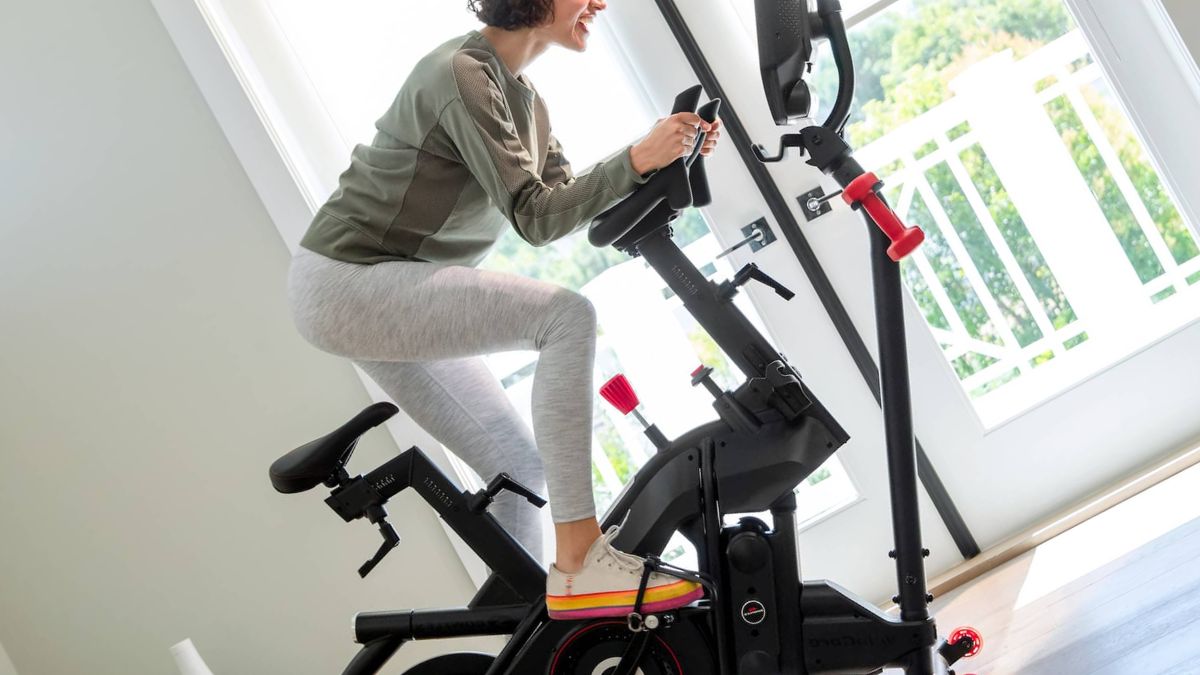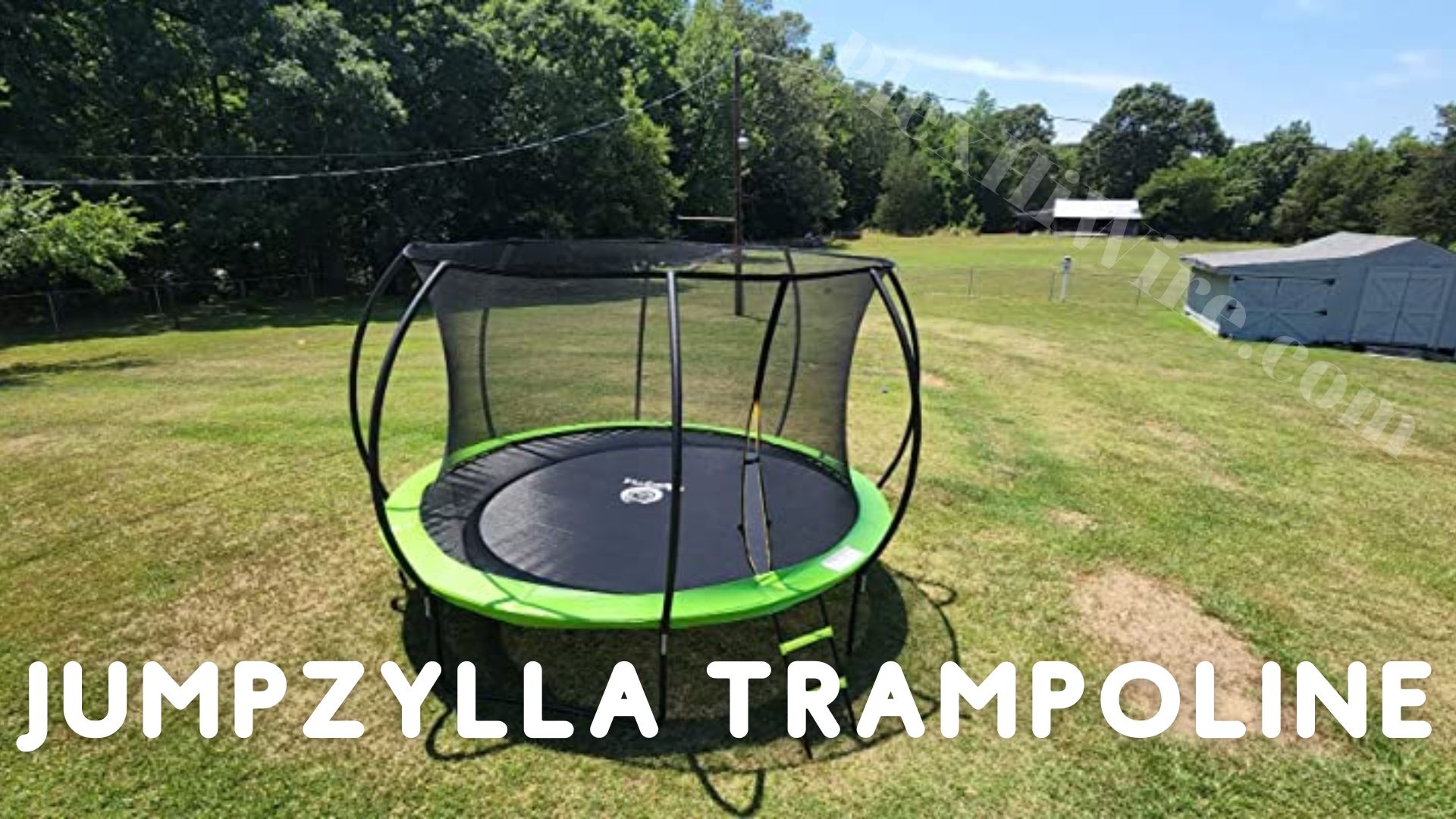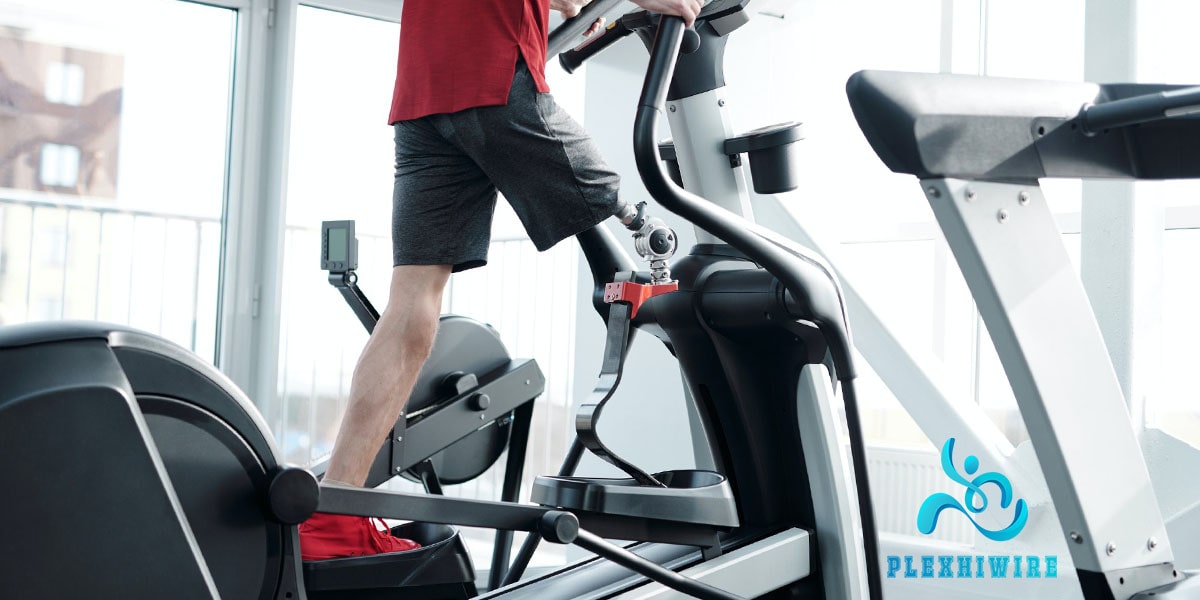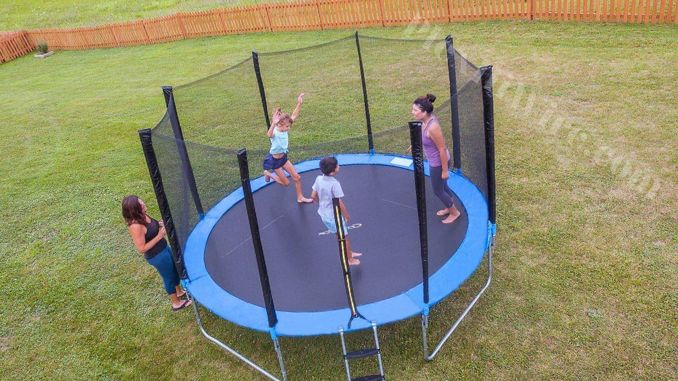Exercise Bike Pedals for an Unbeatable Workout
Have you ever wanted to get the most out of your exercise routine and experience an unbeatable workout? Exercise bike pedals can make that happen! With adjustable resistance levels, comfortable handlebars, and a wide variety of pedal shapes and sizes, these affordable equipment pieces allow you to easily shift from intense cardio workouts at home to low-impact cycling on the go. Regardless of your fitness goals or skill level – beginners who want an extra challenge or pros looking for peak performance – there’s a pedal set ready and eager to increase your game. Learn more about how to exercise bike pedals can transform any ordinary workout into something extraordinary!
Exercise bikes are a great way to get in some serious cardio and incorporate strength training into your routine. Not only can they give you an intense, highly effective workout; but they’re also one of the best low-impact exercises available. And with adjustable resistance levels, it’s easy to customize the level of difficulty so you can achieve maximum results while avoiding any hard impacts on your joints or muscles. Plus, modern exercise bikes come packed with features like calorie counters and performance monitors that will help keep track of your progress as you go. Exercising on a stationary bike with these pedals offers many benefits that can transform your workout experience from ordinary to extraordinary. By incorporating adjustable tension settings and cutting-edge technology into their design, exercise bike pedals provide an unbeatable workout for all fitness levels – so let’s explore how they work and what makes them such great additions to any home training regimen.
- Exercise Bike Pedals for an Unbeatable Workout
- What are Exercise Bike Pedals and How Do They Work?
- Benefits of Using Exercise Bike Pedals
- What Should I Look for in an Exercise Bike Pedal Design?
- Why Should I Replace My Exercise Bike Pedals with New Ones?
- How to Measure the Exercise Bike Pedal That’s Right for You
- What Benefits Do Different Types of Exercise Bike Pedals Offer?
- What Kind of Maintenance is Necessary to Keep My Exercise Bike Pedals Working Properly?
- Are There Any Alternatives to Exercise Bike Pedals?
- What are Common Issues with Exercise Bike Pedals?
- Frequently Asked Questions
- Conclusion
What are Exercise Bike Pedals and How Do They Work?
Exercise bike pedals are an integral part of indoor cycling equipment that allows the user to mimic the pedaling motion of a regular bicycle. These pedals are strategically placed on the bike’s frame, allowing the user to sit comfortably and pedal away without the fear of losing balance or falling over.
In most cases, exercise bike pedals come with straps or clips to keep the feet in place while pedaling. This feature is especially helpful when cycling at high intensity or during a workout where the user needs to maintain their footing while working up a sweat. The pedal’s surface is designed to accommodate a wide range of workout shoes, although some adapters may be required for certain types of shoes.
The pedals on an exercise bike work much like those on a regular bicycle, utilizing rotational motion to generate momentum. As the user pedals, the pedals rotate along with the flywheel, increasing resistance and speed. The resistance level is adjustable, allowing the user to customize their workout to achieve their fitness goals. Some exercise bikes feature advanced pedal systems that allow for the simulation of hill climbing or interval training, providing a more varied and challenging workout than traditional flat-terrain cycling.
It is essential to note that exercise bike pedals require regular maintenance to ensure smooth operation and longevity. Checking the pedals periodically for wear and tear, cleaning and lubricating moving parts, and tightening loose components can go a long way in prolonging the equipment’s lifespan and maximizing performance.
In conclusion, exercise bike pedals are an essential component of indoor cycling equipment designed to provide users with a low-impact, high-intensity cardiovascular workout. They work by utilizing rotational motion to generate momentum and increasing resistance levels to simulate the experience of outdoor cycling. With regular maintenance, exercise bike pedals can provide a smooth, safe, and effective workout to help users achieve their fitness goals.
Benefits of Using Exercise Bike Pedals
Exercise bike pedals are a great way to not only improve your workout routine but also improve your overall fitness and health. These pedals offer a plethora of benefits that you simply can’t ignore. First and foremost, exercise bike pedals provide low-impact exercise that is easy on your joints, making it an ideal choice for people who suffer from joint pain or arthritis. This makes it possible to engage in physical activity that you may not be able to do otherwise.
Exercise bike pedals also offer a cardiovascular workout that improves heart health and helps to reduce the risk of heart disease and stroke. This type of exercise can also boost your metabolism, help you burn calories, and promote weight loss, making it a great addition to a weight loss regime.
Another benefit of exercise bike pedals is that they are easily accessible and can be used in the comfort of your own home. Fitness enthusiasts who don’t have access to a gym or prefer to work out at home can easily purchase an exercise bike and get a full-body workout without leaving their house. This saves time, and money, and eliminates the need for a gym membership.
Furthermore, exercise bike pedals are customizable and adjustable, offering individuals the opportunity to tailor their workout to their fitness level. Whether you are a beginner or an experienced fitness enthusiast, you can adjust the resistance and intensity level to match your personal fitness goals.
Lastly, exercise bike pedals offer a low-impact workout that is easy on the joints, which makes it a great choice for individuals who suffer from knee pain, as well as those recovering from injuries or surgeries. By using an exercise bike pedal, you can maintain your fitness routine without causing further harm to your joints.
In conclusion, exercise bike pedals are an excellent way to improve your health, boost your metabolism, and promote weight loss. If you are looking for an easy, low-impact, customizable, and accessible workout, then exercise bike pedals are definitely worth considering. So, why not give it a try and see how it can benefit you?
What Should I Look for in an Exercise Bike Pedal Design?
When it comes to purchasing an exercise bike, one of the crucial aspects to consider is the pedal design. This might seem like a small detail, but your experience and comfort level during workouts can be greatly influenced by the quality of the pedals. With so many options on the market, it can be challenging to determine what to look for in your exercise bike pedal design. Let’s delve into the factors you should consider to make an informed decision.
First and foremost, the pedals should provide a stable base. A wobbly platform can not only be frustrating but also be a significant safety concern, particularly during intense workouts. Another essential factor to consider is the size of the pedals. Ideally, they should be wide enough to offer enough support for your feet and accommodate different foot sizes. Additionally, the pedals should be textured or have straps to increase grip and prevent your feet from slipping.
Read more: What are Upright Bikes? What Features Does It Have?
The material used to make the pedals is also worth considering. High-quality exercise bike pedals are made from durable materials like aluminum, steel or titanium. These materials can withstand wear and tear and also offer better stability, unlike cheap plastic pedals that tend to break easily. A good pedal should also be adjustable to suit the user’s preferences and body type. This feature allows you to customize the pedal position to ensure you get the best workout experience without any discomfort.
Finally, consider the design of the pedal surface. Some exercise bike pedals feature a flat surface, while others have a slight curvature. The latter provides a more ergonomic and comfortable surface that conforms to the shape of your feet. It’s also essential to pay attention to the space between the pedals. The wider the distance between the pedals, the more comfortable and natural the cycling motion will feel.
In conclusion, when looking for an exercise bike pedal design, you want to consider stability, size, durability, adjustability, and surface design. With these factors in mind, you can find the perfect exercise bike pedals to help you get the most out of your workout.
Why Should I Replace My Exercise Bike Pedals with New Ones?
Exercise bikes are a popular indoor exercise equipment that provides a great cardiovascular workout. The pedals play a crucial role in the functionality of an exercise bike by ensuring that the motion is smooth and consistent. Over time, the pedals may wear out, become loose, or develop other issues that affect the quality of your workout. This is why it’s important to replace your exercise bike pedals with new ones.
Here are some reasons why you should consider replacing your exercise bike pedals:
Improved Performance: New pedals can significantly improve the performance of your exercise bike. They provide better grip, stability, and support, allowing you to ride more comfortably and efficiently. This can result in a more effective workout with better results.
Reduced Risk of Injury: Worn-out pedals can be a safety hazard. Loose or damaged pedals can cause your feet to slip, which can result in injuries such as sprained ankles or shin splints. By replacing your pedals, you can reduce the risk of injury and exercise safely.
Customized Fit: Some exercise bike pedals are adjustable, allowing you to customize the fit to your feet. This can improve your comfort and reduce the risk of discomfort or pain. In addition, you can choose from a variety of pedal types, such as clipless or caged pedals, depending on your needs and preferences.
Longer Lifespan: Replacing your pedals can extend the lifespan of your exercise bike. Worn-out pedals can cause increased wear and tear on the other parts of the bike, which can result in more frequent repairs or replacements. By replacing the pedals, you can keep your bike in good working condition for longer.
In conclusion, replacing your exercise bike pedals can provide numerous benefits such as improved performance, reduced risk of injury, customized fit, and longer lifespan. If you’re experiencing issues with your pedals, it’s a good idea to replace them to ensure that you can continue to enjoy a safe and effective workout.
How to Measure the Exercise Bike Pedal That’s Right for You
If you’re in the market for an exercise bike pedal, measuring it correctly is vitally important to ensure you get the right fit. Measuring your bike pedals might seem like a simple task, but it’s essential to do it correctly for your safety, comfort, and performance.
To begin with, you will need to get a few tools to make the measurement process easier, such as a ruler or tape measure and a set of calipers. The first step is to remove your existing pedals, as this will give you a more accurate reading of their size.
The most crucial measurement you need to take is the pedal’s thread size. This is the diameter of the threaded hole in the pedal and is typically measured in millimeters. You can do this by using your calipers to measure the diameter of the threaded part of the pedal.
Next, you’ll also need to measure the length and width of the pedal platform. This measurement ensures that your foot fits comfortably and securely on the pedal, helping to prevent slipping and injuries. Use your ruler to measure the length and width of the pedal’s surface, ensuring you get an accurate reading.
It’s also worth taking note of the pedal’s weight and materials. Heavier pedals can be more durable but also more challenging to cycle, while lighter pedals are more comfortable to use but less robust. The materials used in the construction of the pedal can also affect durability, traction, and grip, so be sure to choose the right materials for your cycling needs.
In summary, measuring your exercise bike pedal size is a simple but essential task to get right. Taking accurate measurements of the thread size, length and width, weight, and material can help ensure a comfortable, safe, and enjoyable cycling experience. So whether you’re adjusting an existing bike or selecting a new set of pedals, take the time to measure correctly to get the best fit for you.
What Benefits Do Different Types of Exercise Bike Pedals Offer?
Exercise bikes are a popular choice for indoor workouts due to their low-impact, full-body workout potential. However, the type of exercise bike pedal used plays a critical role in enhancing workout performance, user comfort, and overall fitness goals. In this article, we’ll take a comprehensive look at the benefits and features of different types of exercise bike pedals.
One of the most common types of exercise bike pedals is the standard pedal. These are characterized by their simple design, with a textured surface that helps to prevent slippage. Standard pedals are an excellent choice if you’re new to exercise bikes or if you prefer a low-intensity workout. They’re also typically found on most entry-level exercise bikes, making them an affordable option for many fitness enthusiasts. However, some users may not find the standard pedals comfortable due to their flat surface, lack of adjustability, and constrained foot placement.
Toe cages or toe clips are another popular choices for exercise bike pedals. These pedals feature adjustable straps that wrap around the toe of the user’s shoe. They provide a secure grip on your shoe while pedaling, resulting in a more efficient transfer of power to the pedal, thus increasing speed and/or resistance. Furthermore, you can adjust the straps to fit your foot size for a more customized fit and better alignment, reducing strain on your muscles and joints, especially during longer workout sessions. Additionally, they make it easier to achieve a more consistent foot position, resulting in better workout form, which assists in reducing injury risks.
Clipless pedals are the most advanced type of exercise bike pedal. These pedals use a mechanism to attach a special cycling shoe directly to the pedal, providing a seamless connection between the shoe and the bike’s drivetrain. This allows the rider’s foot to stay in contact with the pedal throughout the whole pedal stroke, resulting in a more efficient transfer of power and a noticeable change in the rider’s performance. Clipless pedals are an excellent option for advanced riders, as they require time and effort to learn, are usually more expensive, and require the use of special cycling shoes.
Overall, selecting the right type of pedal largely depends on the rider’s experience level, performance goals, and comfort. While each type of pedal has its own benefits and drawbacks, it’s essential to choose one that matches your fitness goals and cycling objectives. Ultimately, the most important thing is that you’re comfortable and safely pedaling your way to better fitness.
What Kind of Maintenance is Necessary to Keep My Exercise Bike Pedals Working Properly?
Exercise bikes are a great way to stay fit and healthy, and keeping the pedals working properly is crucial to the safety and effectiveness of your workout. Maintaining your exercise bike pedals can be easy and can prolong the lifespan of your machine. Below are some important maintenance tasks you need to keep in mind to ensure your pedals work optimally.
Frequent cleaning of the pedals is essential in keeping them in good condition. Dirt, sweat, and grime accumulate on the pedals after each use, which can cause the pedals to squeak and become loose. Regularly wiping down the pedals after use with a damp cloth will help prevent buildup that might cause issues later on.
It’s also essential to check the tightness of your pedals regularly. An inadequately tight pedal can cause your foot to slip while exercising, leading to injury. On the other hand, over-tightening the pedal can cause the bearing to wear out prematurely. Make sure you check the pedals for proper tightness before and after every training session.
Lubricating your exercise bike pedals is another crucial aspect of maintenance. Without lubrication, the pedals can become stiff and cause unnecessary noise, hindering your workout. Applying grease or lubricant to the bearing of your pedals will keep them running smoothly and quietly.
Finally, inspect the pedal straps to ensure they are in good shape. If the straps are worn out or frayed, it’s time to replace them. Properly adjusted straps ensure your feet stay in place, preventing needless injury.
View more: Discover the Benefits of Indoor Cycling
In conclusion, taking care of your exercise bike pedals is essential to keeping them in good working order. With proper maintenance, your pedals will last longer and provide a smoother, safer workout experience. So make sure to clean, check, lubricate, and inspect them regularly so that you can enjoy your exercise bike for years to come.
Are There Any Alternatives to Exercise Bike Pedals?
For those who have been using exercise bikes for a long time, the monotony of using the same pedals can lead to boredom and a lack of motivation. Fortunately, there are a number of alternatives that can revitalize your workout routine. These alternatives offer the opportunity to work different muscle groups and provide a variety of challenges, helping you to stay engaged and motivated.
One popular alternative to exercise bike pedals is the use of clip-in pedals. These pedals allow you to wear cycling shoes that clip into the pedal, providing a secure and efficient way to pedal. Clip-in pedals also enable you to use different muscles in your legs, as they require more engagement from your hamstrings and glutes to pull the pedal up.
Another alternative to traditional exercise bike pedals is the use of pedal straps. These straps attach to the pedals and fasten over the top of your foot, providing a secure and adjustable connection to the bike. Pedal straps allow you to use different muscles in your feet and ankles, as they require more engagement from your toes and calf muscles to push through the straps.
If you are seeking a more advanced alternative, you can try the use of power pedals. These pedals measure the power output of your pedal stroke and provide real-time feedback on your performance. Power pedals enable you to track your progress and set goals for improvement, helping you to stay focused on your fitness goals.
In summary, there are a variety of alternatives to exercise bike pedals that can add variety and challenge to your workout routine. Whether you choose clip-in pedals, pedal straps, or power pedals, these alternatives can help you to engage different muscle groups, track your progress, and stay motivated on your fitness journey.
What are Common Issues with Exercise Bike Pedals?
Exercise bike pedals are one of the most important components of an indoor cycling session. Pedals pose as the driving force that connects your feet to the bike and help to create an efficient workout. However, just like any other mechanical component, exercise bike pedals can encounter a multitude of problems. The following are some common issues that bike owners may face with their exercise bike pedals:
Pedal slippage: One of the most common issues with exercise bike pedals is pedal slippage. This occurs when the feet fail to firmly grip the pedals, leading to the foot coming off while cycling. This can be caused by worn-out pedals or shoes, or pedals that have been incorrectly tightened. It is essential to ensure that the pedal axles are optimally tightened, and the pedals are periodically inspected for signs of wear and tear.
Pedal noise: Another issue that frequently occurs with exercise bike pedals is noise. This can be caused by a variety of reasons, such as worn-out bearings, loose parts, or incorrectly fitted pedals. This can cause a distracting and annoying sound while cycling, and it is important to have the issue diagnosed and fixed as soon as possible.
Pedal misalignment: Pedal misalignment is another common issue with exercise bike pedals. This occurs when pedals are not aligned correctly, leading to an uneven and uncomfortable cycling experience. Pedal misalignment can be caused by improper installation or can occur over time through general wear and tear. It is essential to ensure that pedals are correctly installed and to periodically check for any signs of misalignment.
Pedal malfunction: Exercise bike pedals can also fail to perform their function correctly due to malfunction. This can happen when pedals become jammed or stuck, making it hard to cycle normally. Pedal malfunctions can be caused by a variety of factors, such as accumulating dirt, archaic pedals, or broken bearings. To avoid pedal malfunction, it is crucial to maintain the bike and to ensure that all components are in excellent condition.
In conclusion, exercise bike pedals are essential to indoor cycling, and it is necessary to pay attention to any issues that may arise. Issues such as pedal slippage, pedal noise, pedal misalignment, and pedal malfunction, can significantly impact your cycling experience. By taking a proactive approach to maintenance, you can ensure the longevity and proper function of your exercise bike pedals.
Frequently Asked Questions
Is It Beneficial to Work Your Exercise Bike Pedals Backwards?
While most of us are accustomed to using exercise bikes by pedaling forwards, there’s been some buzz about the potential benefits of working the pedals in reverse. According to some trainers, pedaling backward can actually recruit different muscle groups than biking forward, giving you a well-rounded workout. Additionally, it can help to alleviate any muscle imbalances that come from exclusively biking in one direction. Of course, it’s important to note that reversing your pedals isn’t a magic solution for all your fitness woes. It’s just one tool in your workout toolbox that can help you mix it up and challenge your body in different ways.
Can You Put Regular Bike Pedals on a Spin Bike?
The popularity of spin bikes has skyrocketed in recent years, thanks to the convenience of being able to work out from home. However, for those who prefer the feel of regular bike pedals, the question arises: Can you put regular bike pedals on a spin bike? The short answer is yes, but it may require some adjustments or the purchase of additional adapters. It is important to note that using regular bike pedals may change the intensity and feel of the workout, so it is best to consult with a professional to determine if this modification is suitable for your fitness goals. Nevertheless, the option to switch out pedals provide greater flexibility and customization for spin bike enthusiasts.
Do All Bike Pedals Fit All Bikes?
Biking is a great form of exercise and transportation, but when it comes to upgrading bike pedals, it can be confusing to know which pedals will fit your specific bike. The short answer is no, not all bike pedals fit all bikes. The important factors to consider are the threading and the interface. Bikes can have either a 9/16-inch or ½-inch threading, and pedal interfaces can vary between Shimano, Look, and Speedplay, among others. It is crucial to ensure that the pedals you choose match both the threading and interface of your bike to ensure a proper fit and a safe ride. But with the right research, you can easily upgrade your bike pedals and enjoy a smoother, more efficient ride.
Conclusion
Working out with an exercise bike can be an incredible experience that will give you a sense of satisfaction and achievement. Not only will exercising help improve your physical health, but it could also give you benefits such as increased concentration, improved sleep habits, lower levels of stress, better moods, and higher energy levels. It is also a great way to get in shape without having to put in lots of time and resources. With any bike pedals or other equipment, it’s important to research the features carefully and make sure that they are the right fit for you. Exercise bikes offer one of the most effective workouts available and if used correctly they can give you amazing results!
With new innovations like exercise bike pedals, you can enjoy a complete home workout without having to leave the comfort of your own home. What’s even better is that exercise bike pedals are extremely affordable, so no matter what your budget may be you can still get a great workout in! Everyone should give exercise bike pedals at least one try – it is likely that you will not be disappointed with the results. Not only will your physical health benefit from this type of workout, but also your mental health too. Exercise bike pedals are an unbeatable workout choice – improve both your physical and mental health today for a healthier tomorrow. With a variety of models depending on your fitness goals, everyone can find something that works best for them. Whether you’re wanting to strengthen your legs or amp up your aerobic capacity, take the plunge and try out an exercise bike pedal – you won’t regret it!








